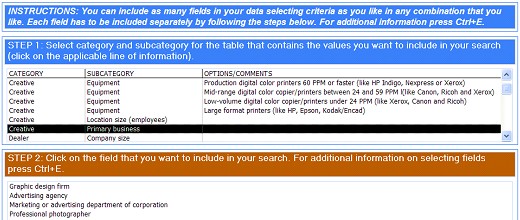Website sections:
- Services Provided
- IT Project Management
- Application Development
- Creativity Management
- Previous Work Experience
- Site Map
- Contact Information
Current section's content:
- Overview of Current Focus and Previous Work Experience
- Creativity Management Method Development Project
- Previous Work
- Overview of the Previous Work
- Achieve More with Less Effort
- Market Research Tools
- Marketing, Prospecting and Sales Tools
- Resource Scheduling Tools
- Event Planning Tools
- Project Planning, Development and Management Tools
- From Search Functionalities to Multi-Functional Report Centers
- Reports
- Data Entry, Uploading and Filtering Tools
- Application Navigation and Usage Assistance Tools and Features
- Artistic and Entertaining Nuances: Brighten the Moments!

Marketing, Prospecting and Sales Tools
Marketing, prospecting and sales tools can be part of the same multi-functional application, or they can be part of different applications that can share the same data source.
For additional information on sales tools, please see the CRM Sales Software Selecting and Customization Processes subsection.
Marketing and prospecting tools discussed here focus on adding data and then selecting the right target market or match for a particular need. Sales tools focus on increasing sales through using built-in sales processes, on customer relationship building and maintaining, and on increasing the customer base.
Marketing and prospecting tools can be set up somewhat similarly to report centers. (Report centers are discussed in the subsection Multi-Functional Report Centers.) Such tools allow assembling quickly customized lists based on previously uploaded data and, optionally, sending emails to the selected addressees. The user has to assemble the criteria set by clicking on all of the relevant characteristics, and then selects the action the application should take which could be, for example, different type of report generating, mail merge letter generating, or emailing with or without computer-generated attachments.
Sales tools should reflect the company's sales operations. For example, a sales CRM application could contain the following types of tools, all customized for the individual company's needs:
- Tools, that help to find and select customers by matching products and services to customers
- Sales processing tools
- Functionality, that helps to increase the customer base
- Customer relationship management tools that help to maintain the existing customer base
- Sales planning, tracking and reporting tools for the sales management
- Tools for employees who need to enter data into the application

